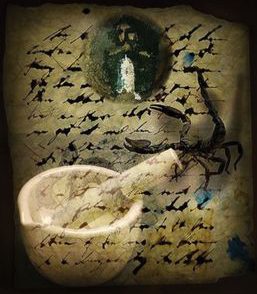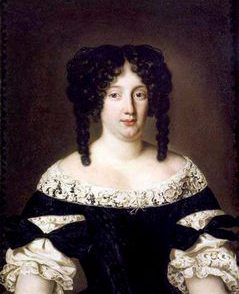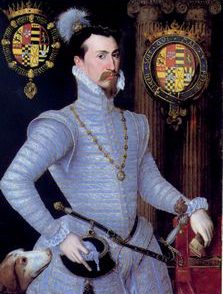Discovered in a Roman avviso in the Medici Granducal Archive-just one of thousands of such handwritten journalistic reports to reach Florence in the seventeenth century-is a brief but extraordinary account of the meeting of two hermaphrodites. At the very end of this document, dated November 11, 1662, the anonymous writer reports, ‘They are confirming that there will be a court hearing on a case in which a priest was giving Confession to a young woman, when together they realized that both of them were hermaphrodites, and they examined each other, and thereupon they joined together reciprocally, so that ultimately the priest wound up pregnant’.
No doubt, the story was as incredible in the seventeenth century as it is today, which explains why it was being taken to a legal court-presumably the Sacra Rota-for verification and adjudication. Whether or not it proved to be true in all its details, we still might ask ourselves, What made this story ‘newsworthy’ in seventeenth-century Italy? And what kind of reactions and associations did it elicit?
Hermaphroditism came to the attention of Europe’s literate classes during the Renaissance, thanks to the revival of classical writers who had treated the phenomenon, including Aristotle, Pliny and Ovid. In these respected ancient works, as well as in the writings of the early Christian theologian Saint Augustine, Renaissance readers encountered open discussions of the topic. These discussions exemplified the freedom of speech that they themselves longed for, which explains why Renaissance authors first invoked hermaphroditism as a provocative battle cry in their struggle to attain the poetic license once enjoyed by ancient writers.
This emergence of hermaphroditism into modern discourse can be traced to 1425, when Sicilian Humanist Antonio Beccadelli, alias il Panormita (1394-1471), entitled his book of smutty Latin poetry Hermaphroditus. By invoking the classical theme of hermaphroditism (and, more specifically, the two-natured offspring of Hermes and Aphrodite in Ovid’s Metamorphoses), Beccadelli presumed that his sophisticated audience would appreciate his poem’s prurient content as a high-brow allusion to ancient precedents like Martial’s Epigrams and the Priapea. His project was not successful. Beccadelli’s work was predictably censured by the Church, and the book’s dedicatee, Cosimo de’ Medici, apparently did not want to be associated with this salacious work and refused his patronage to the author. Years later, after having lost yet another patron, Beccadelli wrote Cosimo an apology for his Hermaphroditus and its moral effrontery: ‘If you recall, Cosimo, I dedicated to you a book with the foul title of Hermaphroditus. It grieves me to recall here the various filthy acts and impious ways of Venus, which nature flees from. I was hoping to raise up an immortal name for myself if I could destroy the temple of the goddess Vesta. It did not shame me even to speak of you to my friends, you whom Florence has cherished as a citizen of inviolate morals. … It is impious to have celebrated in verse things unworthy of such great men. Alas, I, too, recognize my offense’ (trns. O’Connor).
After having been exploited as a rallying-call for poetic license, the topic of hermaphroditism was revisited in the late sixteenth century, again in literary circles. At this time, it still retained associations with both moral transgression and cultural refinement. This much can be deduced from Thomas Artus’ The Island of Hermaphrodites, a utopian novel that is frequently read as an allegorical satire of the dissolute French court of King Henri III. This strange tale uses the figure of the hermaphrodite as a symbol of men who have been emasculated and vituperated through excessive sensuality and luxury, and who indulged shamelessly in incest, rape, murder, atheism and blasphemy.
In these same years, a new kind of interest in hermaphroditism emerged, this time on the part of doctors who focused on actual, witnessed cases of the phenomenon. Surgeon to four French kings, Ambroise Paré in 1573 wrote a treatise entitled ‘On Monsters and Prodigies’, two chapters of which he referred to known instances of hermaphroditism. Departing from the common notion that the birth of a hermaphrodite was an augur sent by God, Paré saw hermaphroditism as a human medical condition. He attributed it not to spiritual causes, but to natural ones, most of which he ascribed to conditions that interfered either with the biological processes of conception or with the development of the fetus in the womb. Also, unlike the Thomas Artus’ literary portrayal of hermaphroditism as the result of the decadence of the male body, Paré demonstrated with medical arguments that hermaphroditism was the result of alterations in an initially female body. The impact of the new medical interest was to dispel hermaphroditism’s earlier moral associations. From the physician’s point of view, only the parents of hermaphrodites could be blamed for deviancy, since current theories held that the child’s condition was caused by, among other things, by the abnormal circumstances of its conception.
By 1612, this exculpation of the hermaphrodite was a cultural fact. This is demonstrated by anatomist Jacques Duval’s Treatise on Hermaphrodites, in which the author argued that a woman who had been condemned to death for lesbianism ought to be acquitted of the charge (as indeed occurred) because she had a hermaphroditic condition that gave her legal claim to being a man. Being recognized as a hermaphrodite spared the individual from the consequences of a perceived moral crime.
In the seventeenth century, the popularity of science as a gentlemanly pastime fueled the craze for collections of natural wonders, and, as a consequence, hermaphrodites came to be seen as wondrous or marvelous examples of nature’s astounding works. Cultivated men were now looking at the hermaphrodite’s body with the same pleasant curiosity as they might, say, view a new variety of tulip or an ancient fossil. Calculated to satiate their interest was a 590-page book by Swiss botanist Gaspard Bauhin, On the Nature of the Births of Hermaphrodites and Monsters (1612), complete with engraved illustrations. Compared to its illustrations of so-called monsters, such as a woman suffering from elephantitis and a severely deformed fetus, the two hermaphrodites depicted here are remarkable lovely, with delicate features and the healthy, well-formed bodies of prepubescent youths. They are shown completely nude and in graceful stances, as if modeled upon the epheban beauty seen in certain ancient statues of the Olympian deities Apollo and Mercury.
After garnering the fascination of the scientific community, the hermaphrodite’s body was elevated as an object of supreme aesthetic value. This development in artistic taste took place at Rome’s papal court. Shortly before the year 1620, a near life-size ancient Roman sculpture of a sleeping hermaphrodite was presented as a gift to Cardinal Scipione Borghese, nephew of the reigning pope, Paul V. Cardinal Borghese commissioned Gian Lorenzo Bernini to restore the marble mattress on which the Hermaphrodite sleeps, and he put it on display in Villa Borghese, where it attracted great admiration and inspired multiple small-scale copies in bronze. A full-size copy in bronze was commissioned in 1650 by the painter Velázquez on behalf of the Spanish king, and in the 1670s a full-size marble copy was executed for Louis XIV’s palace of Versailles.
Returning now to think about the news report that reached Florence from Rome in 1662, it is understandable that such a story would have attracted the interest of contemporaries. Surely some readers would have reacted with scientific interest in the physiological truths underlying such an event, and more still would have marveled at the mysterious ways of nature.
Eugene O’ Connor, ‘Panormita’s Reply to His Critics: the “Hermaphroditus” and the Literary Defense’ Renaissance Quaterly, vol. 50,1997.







